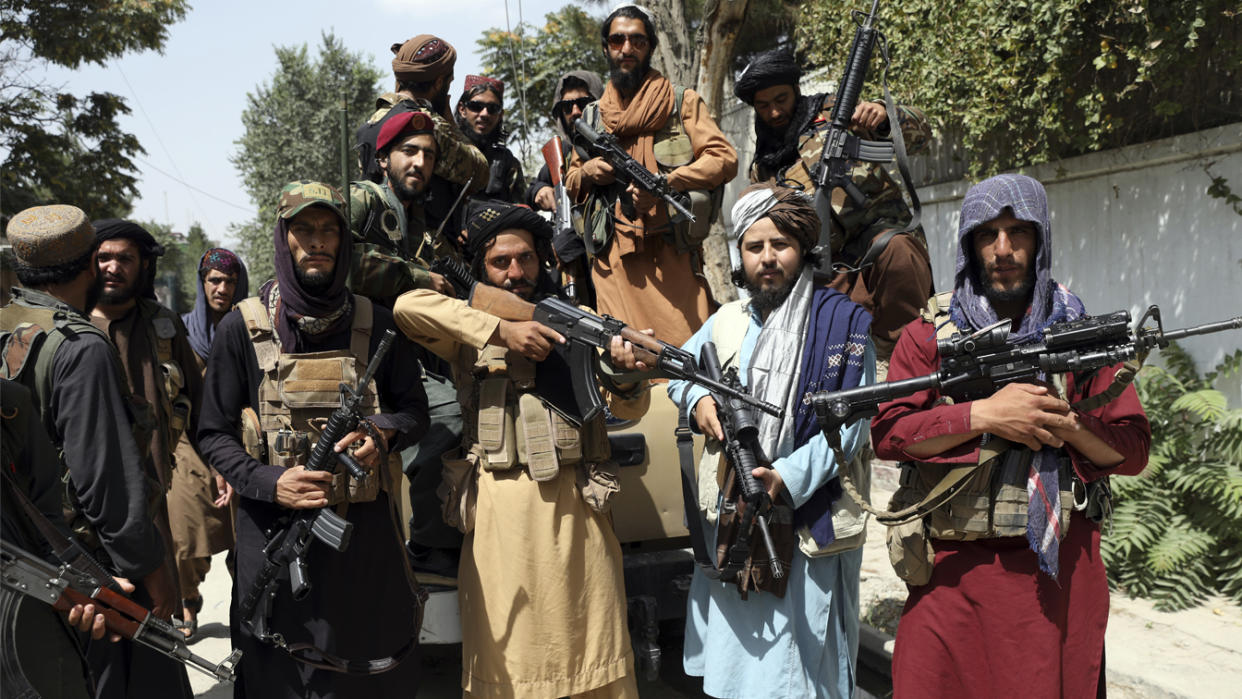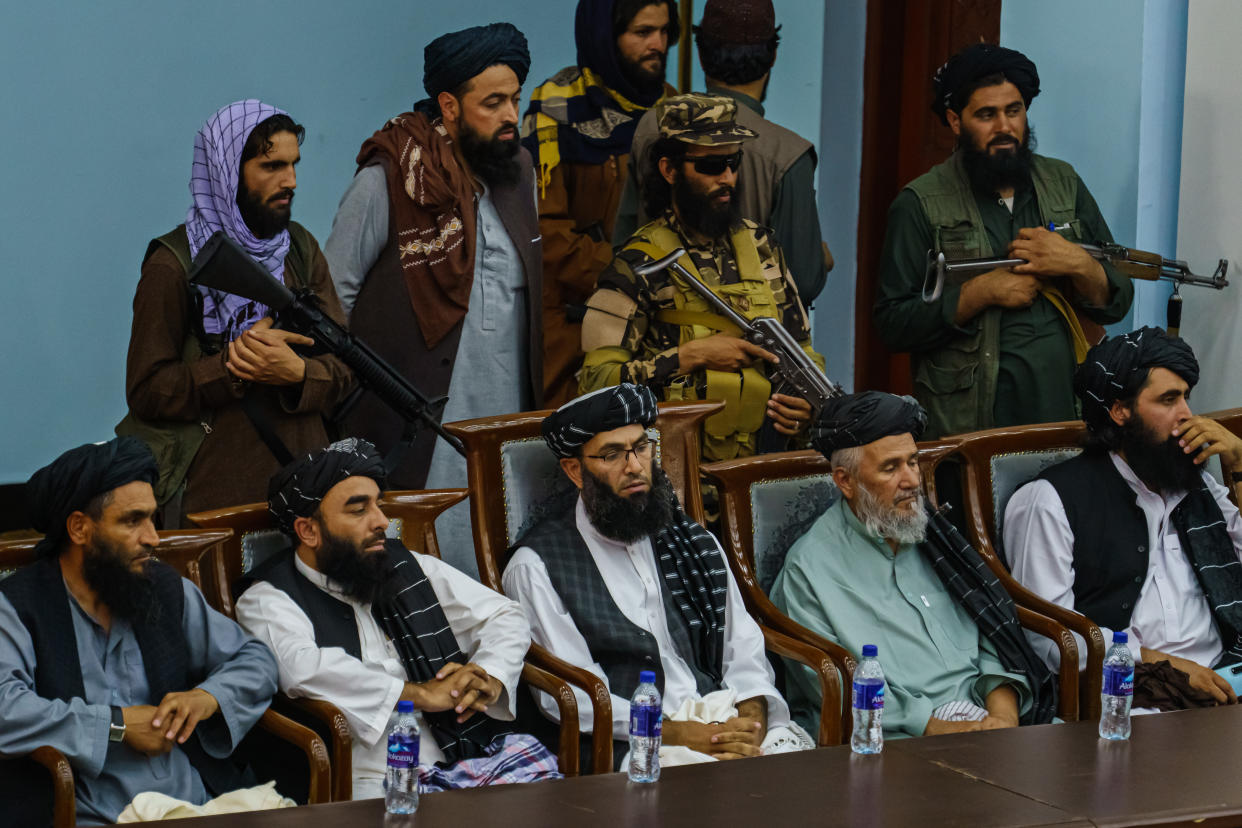Taliban takeover of Afghanistan impairs CIA counterterrorism work, experts say
As the Biden administration copes with the fallout from the Taliban takeover of Afghanistan — including concerns about possible attacks by the Islamic State against the U.S. evacuation effort and a resurgent al-Qaida — the CIA is facing a loss of spies on the ground and drones in the air that would normally be used to collect intelligence on terrorism threats and on the Taliban, according to former agency officials.
In particular, the withdrawal will hamper the CIA’s ability to maintain its source network within Afghanistan, according to former officials. “It’s really hard to run your sources, and develop new ones, when you’re not there,” says Daniel Hoffman, former chief of the CIA’s Near East Division, which includes Afghanistan.

Among the most immediate concerns are threats to ongoing efforts to evacuate Afghans who worked with the U.S. and coalition partners, along with American citizens still in the country. “The threat is real. It is acute. It is persistent. And it is something we are focused on with every tool in our arsenal,” national security adviser Jake Sullivan said in a recent CNN interview.
On Monday, CIA Director Bill Burns secretly met with Taliban leader Abdul Ghani Baradar in Kabul, likely to discuss the ongoing evacuation operations of the U.S., according to the Washington Post.
With the pullout, the CIA has lost access to bases that were co-located with U.S. military installations across Afghanistan. But the closure of the U.S. Embassy in Kabul — and the CIA station contained therein — has a greater long-term effect on agency spying efforts, say former officials.
“The embassy is the big thing,” says a former CIA official. “Not having a hub on the ground makes things really, really hard for the agency.”
Though the Taliban’s counterintelligence capabilities are not nearly as sophisticated as Iran's or North Korea’s — both countries where the U.S. lacks a diplomatic presence, thereby limiting CIA operations — the physical dangers of operating in Afghanistan will drastically limit the ability of CIA officers to meet in-country with their sources, according to former officials. The CIA’s experiences operating in postwar Vietnam (as well as in Iran and North Korea today) may provide some useful insights into the necessary tradecraft to work in a place like Afghanistan, according to former officials.

Afghanistan “will be not quite denied to us, but super-hard to get to,” says Hoffman. “It’s not like the old days. It was hard in the old days to do our work, when we owned a lot of the battle space, but we don’t own it anymore. So that makes it really hard to run sources and do the work we have to do.”
Instead, the agency will likely move its main Afghan operations base abroad — presumably to a friendly country in the Middle East — arranging meetings with key sources in third countries and communicating with others within Afghanistan via covert digital tools provided to CIA assets before the withdrawal, according to former officials. Finding ways to continue to speak to these “stay-behind” sources will be an agency priority, according to former officials.
But these shifts could be a major challenge for the CIA, which became accustomed to relatively easy access to sources during America’s 20-year occupation of Afghanistan.
“The core problem is that the agency folks in Afghanistan largely got pretty f***ing lazy because 60 to 70 percent of the time an asset came to base for a meeting,” says the former CIA official. “The rest of the time [CIA paramilitaries] were driving you around to meet them. When a case officer went out, they went out in armored SUVs with a security team.”
Even with that level of access, the intelligence community has been criticized — some say unfairly — for not anticipating the rapid fall of the U.S.-backed government, which took place in a matter of days, not months. Within a week before the fall of Kabul, CIA officials were telling allied Middle Eastern intelligence services that the Taliban would not take the Afghan capital for at least 90 days, according to a second former agency official.

The CIA’s technical spying capabilities will be less affected by the pullout, though still degraded, according to former officials. The agency will still be able to monitor Taliban communications via U.S. satellites and other intelligence, surveillance and reconnaissance aircraft, but the lack of nearby bases will preclude the use of smaller drones to collect signals intelligence.
However, “the terrain makes it difficult to do overhead stuff and rely on that,” says Hoffman. “The terrain is very unfriendly. People can hide there.”
The CIA will also probably rely more on intelligence shared by allied services that maintain a presence within Afghanistan or better relations with the Taliban, say former officials. These include the Qatari, Emirati and Saudi spy services, according to the second former CIA official.
“A lot of Middle Eastern [intelligence] services have a decent-size presence in Afghanistan — the UAE and Saudi, Jordan, the Egyptians have a presence there,” says this former official.
The Qataris have close political ties with the Taliban, which opened an office in the Qatari capital, Doha, in 2013. The Emiratis, meanwhile, maintain connections to the Haqqani network, according to the former CIA official. That network is a Pakistan-based Taliban affiliate designated a terrorist group by the U.S. in 2012.
The CIA will also likely increase its spying on other intelligence services with access to Taliban-related information, say former officials. “Everyone who handles the Taliban profile is probably going to be targeted via sigint [signals intelligence] and cyber,” says the former agency official — for example, the head of the Taliban desk within Qatar’s intelligence service, according to this former official. “Can you run technical collection against countries who do have offices there?” asks the first former CIA official. "We’ve been targeting the Pakistanis, Uzbeks, Russians and Chinese [in Afghanistan] forever.”

Former officials say the CIA will continue to concentrate on collecting Taliban-related political intelligence, as well as counterterrorism-focused information targeting al-Qaida and ISIS personnel within Afghanistan.
But it’s unclear just how central a front Afghanistan is in what was once called “the war on terror.” Some former CIA officials believe the two-decade-long campaign against al-Qaida has left the organization a shell of its former self. “Viable external operations planning — they don’t have it there,” says the second former CIA official. “Al-Qaida’s capabilities are degraded. It’s not what it used to be.”
Other officials disagree. “There is al-Qaida [in Afghanistan],” says Hoffman, the former senior CIA official. “[Al-Qaida chief Ayman] al-Zawahiri is there. There’s plenty of al-Qaida guys in Afghanistan, and they will flow out from other places to Afghanistan.
“You can say they don’t have the capability to strike us now. But someday they will. And we’ve created the conditions for that.”
____
Read more from Yahoo News:


